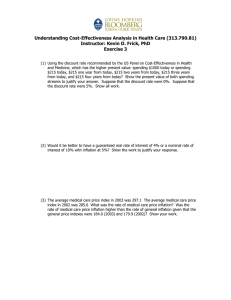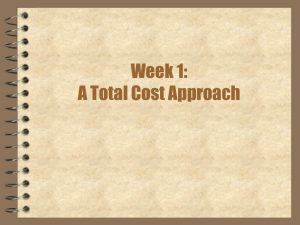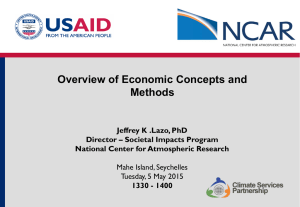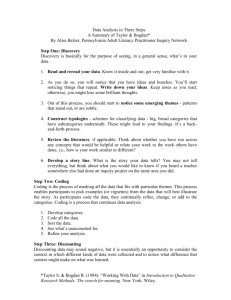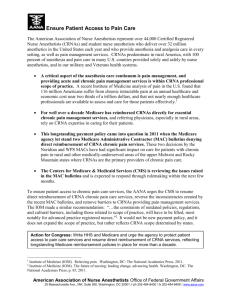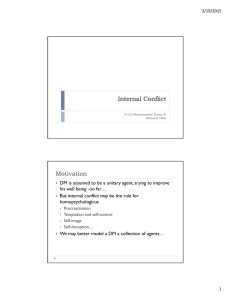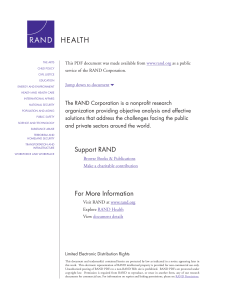Document 11603609
advertisement
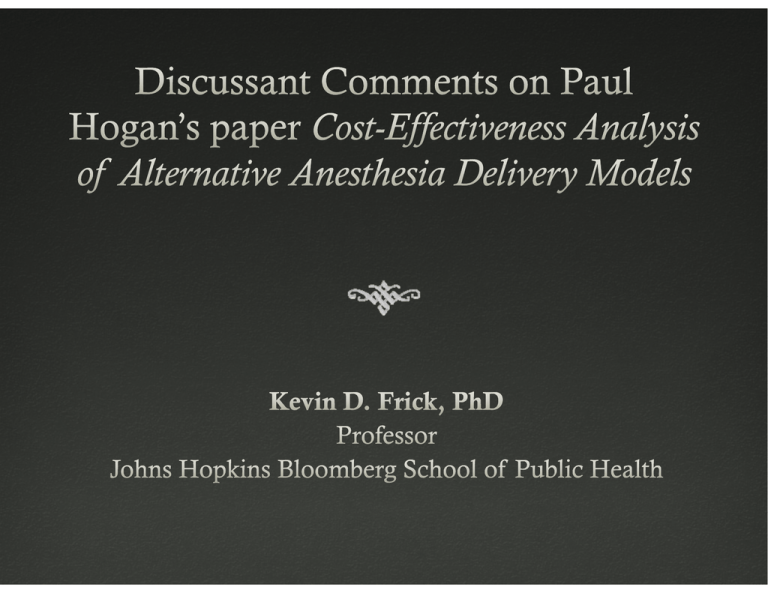
Main Conclusion Paper p provides p a very y informative review of the comparative effectiveness of different providers of anesthesia services and clearly demonstrates the economic advantages of an approach that focuses on CRNAs Details of the argument • Authors have made the following argument – – CRNAs and anesthesiologists provide similar quality of care (regardless of the level of supervision for the CRNA) A CRNA acting alone is… is • the least expensive way to provide the level of care – • – • for society and for a private insurer the most profitable way to provide the level of care CRNAs are much less costly to train As a result of these points we should train CRNAs and allow them to practice in more settings Key Unanswered Questions Why y do we not seem to have a mix of CRNAs and anesthesiologists that would reflect allocative efficiency? Not just making the product with the least expensive resources but having the right mix of products What else might need to be done to achieve allocative efficiency? Some Methodological Issues • Standardization will help to make research more understandable and more useful and more recognizable by policy makers • Points – – – Use of the term “cost-effectiveness” Importance of elaboration on discounting, discounting inflation, inflation and regression analysis Importance of sensitivity analyses varying perspective, quantity of demand for services, services certainty of demand for services, settings, and other parameters Use of the Term CostCostEffectiveness • In popular discussions – • In academic discussions – – – • the h term cost-effective ff i is i often f confused f d with i h cost saving i if all options yield similar outcomes outcomes, we can talk about cost minimization of cost-effectiveness the results/outcomes/quality of care can vary quite a bit between and among alternatives. when cost-effectiveness is used we are most commonly comparing two or more alternatives with different costs and outcomes and asking whether the one is less costly and more expensive or whether the one that is more expensive and more costly is worth the extra cost This work could be interpreted as a cost minimization study Elaboration on Discounting • Paper mentions that when discounting was applied the costs i increased d by b 4% but b t the th qualitative lit ti conclusion l i does d nott change • In reality, reality discounting rarely makes a big difference— difference especially over a decade or less • Most commonly, discounting is like taking a stream of payments and translating it from a cash flow to how much money would be needed at the start and results in cost reductions. – I don’t doubt that what was done is correct but it would be nice to see details to make sure it matches with expectations Inflation • Paper p mentions that all costs were inflated to 2008 dollars • Adjusting for inflation is always important as decision makers need to know what things cost today and not when they were reported in the literature • What we need to know is a bit more about the process of inflation adjustment since the costs of medical education (and higher education more generally) have generally increased at a much higher rate than the general consumer price index Regression The regression g is not described in detail Differences are reported as percentages Thi This probably b bl implies i li taking t ki a logarithm l ith off the th dependent variable or using a log-link function but more p details would be helpful Making assumptions about what an author did can sometimes result in misinterpretation Sensitivity Analysis • Well done and extremely important – – – – – • Costs to the C h hospital h i l Costs to the insurer Costs to society Diff Different settings i Different levels of demand A few questions – – What about costs to the patient? Mentions varying parameters by +/-10% • • – One at a time or all at once? Why only 10%? What is meant by least likely to result in negative net revenue? Final Economic Point Referringg to somethingg as inefficient in the context of pure economic jargon means not being produced at the lowest cost However, cost alone is not all important when we are y in which the price p does not workingg with a system necessarily bear any relationship to the marginal cost Conclusion Economics is an important p tool but usingg the standard economic theory is difficulty in health care Jargon is confusing but using it consistently and in standardized ways will help everyone interested in performingg and interpreting p p g the results for policy p y and decision making


